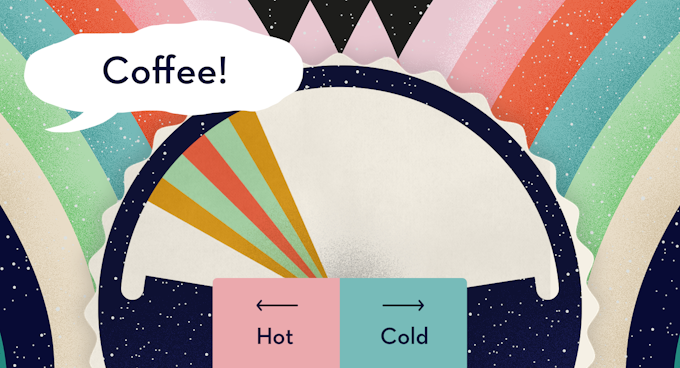Developing a new party game, one that introduces a new and unique take, is actually an impressive feat of cleverness. In a world of low-effort Pictionary and Apples to Apples clones, creating a game that is fun, original, memorable and sociable, is a formidable goal. Finding a new, easy, and engaging way to interact with friends and strangers is even more challenging.
There’s a frustrating point of irony in designing a party game. While a party game should be as simple as possible, for a variety of reasons, this actually gives the designer a shrinking amount of design space to work with. The designer gets, like, half a dozen rules to work with, and they all have to be precise. So when a new innovative party game comes out, it’s absolutely worth notice.
Joining the line of landmark unique party games such as Apples to Apples, Dixit, and Codenames is a stylish, quirky little number called Wavelength.

Wavelength borne from a collaboration between two game designers, Alex Hague and Wolfgang Warsch. In 2015, Hague published an updated, stylish version of the public domain folk game Celebrities, now called Monikers. He joined forces with veteran game designer, Warsch, who designed some standout hobby classics such as That’s Pretty Clever, the award-winning Quacks of Quedlinburg, and the oddball psychic card game The Mind. These are impressive track-records.
Combining their graphic design sensibilities and game design expertise, they invented Wavelength and completed a very successful Kickstarter campaign. Now Wavelength is available via retail, and its popularity is only growing.
It’s easy to see why, too. Wavelength’s captivating gameplay is fun when you’re playing with friends or strangers, even in mixed crowds. It’s fun to simply watch other people play, and easy to pick up on the flow of the game. And there’s this wonderful plastic wheel that’s eye catching and a joy to fiddle with. To enhance the clever gameplay, the components are beautiful and in vogue.
Players group up into two teams. Each team can have any number of players, but it can't be more than two teams. Each team then pick a clue-giver for the turn. The clue giver takes one hint cards, which describe some kind of opinion continuum. "Hot" or "Cold" for example. 
Then, the clue giver spins the Wavelength wheel to a random position and notes where the scoring slice ends up (the colored red, green, and orange bits in the above image). The goal of the clue-giver is to then give a clue that will direct the rest of the team to the correct placement on the wheel. In our example, you can see the clue they gave is "Coffee." The clue giver then hides the the scoring slice behind a shutter and then turns around the wheel to face their team.
Now it’s up to the rest of the team to guess where that slice is, hidden behind the shutter. The wheel has a needle that the team can turn to indicate their guess. Here is where the crux of the game lies. Ask yourself now, on a scale of Hot to Cold, where does coffee lie? Is coffee hot or cold in your mind? Maybe a teammate thinks coffee is cold because they always get iced coffee. Maybe you think its scalding hot because you always microwave yours until its temperature matches the center of a hot pocket. Maybe someone else has their own distinct opinions about this. Using it’s special wheel, Wavelength generates an intriguing icebreaker question. Are you all on the same Wavelength? And, this is the magic that Wavelength contains. It’s a game, sure, with rules and points and winners and losers. But more than that, it brings people together. The mechanical rules complement and support a softer, more social experience that isn’t about strategies and tactics - it’s about people. Just as a proper party game should. How well can one sync with those around them? How off-the-wall of an example can be provided to get a team to immediately know where an example is on a scale?
And, this is the magic that Wavelength contains. It’s a game, sure, with rules and points and winners and losers. But more than that, it brings people together. The mechanical rules complement and support a softer, more social experience that isn’t about strategies and tactics - it’s about people. Just as a proper party game should. How well can one sync with those around them? How off-the-wall of an example can be provided to get a team to immediately know where an example is on a scale?
On a scale of Bad Idea to Good Idea, getting Wavelength for your game shelf is an easy choice. Crank that red needle all the way to the right, because its easy to be on the same Wavelength about that.

